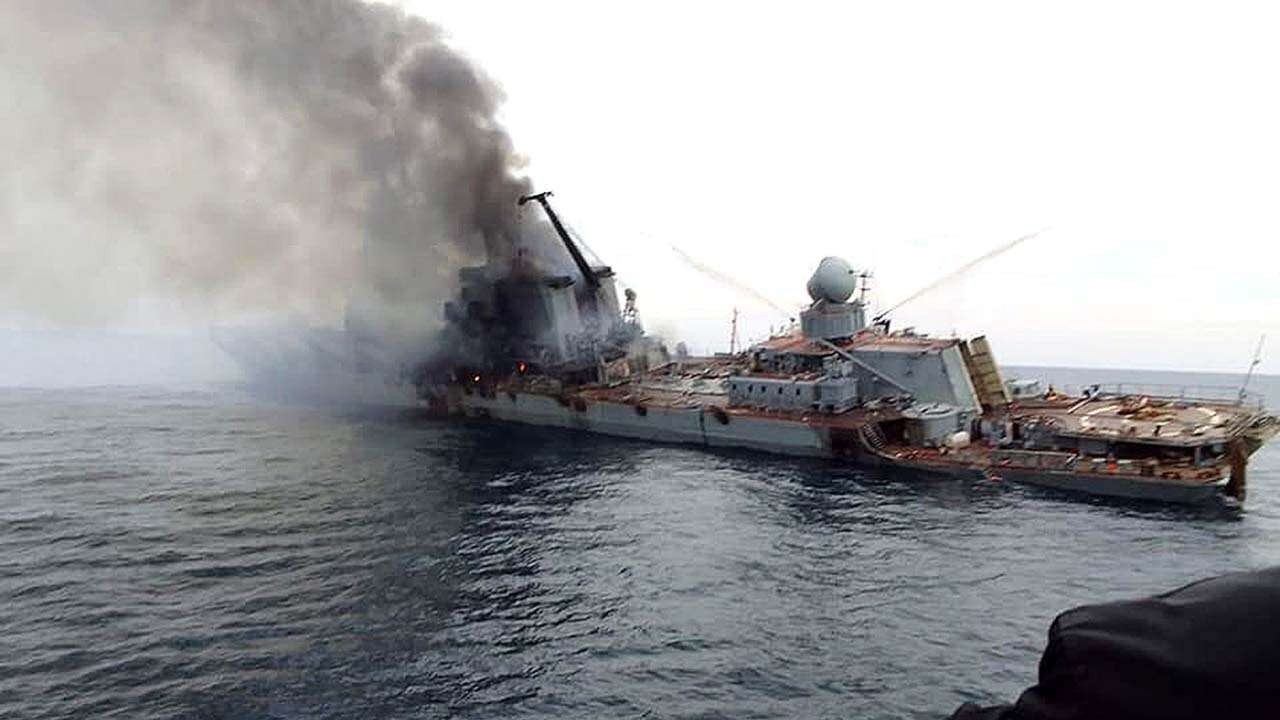Russia and Ukraine are unleashing a barrage of missiles and drones against each other in an intensifying aerial battle. Russia now is claiming that its air defense systems have destroyed a Neptune anti-ship missile over the northwest portion of the Black Sea.
”On January 5, around 12:30 p.m. Moscow time (9:30 a.m. GMT – TASS), an attempt by the Kyiv regime was thwarted to carry out a terror attack on targets in the Russian Federation with the use of a Neptune anti-ship missile. Air defense systems on duty detected the Ukrainian missile and eliminated it over the northwestern waters of the Black Sea,” the military agency was quoted by TASS News Agency.
The interception was announced when Russia upped the ante against Ukraine by launching a barrage of missiles against prominent Ukrainian cities, including the capital, Kyiv. In response, Ukraine has also launched several missiles and drones. Both sides have claimed shooting down most incoming hostile projectiles.
The RK-360 Neptune missile is derived from a former Soviet cruise missile known as the Kh-35. The Neptune operates at a low altitude and subsonic speed and is well-suited for its land-attack capability. Adding a land attack ability to the Neptune missile closely follows the trajectory pursued by the RGM-84 Harpoon.
The Russian ship Moskva is still the most famous target of the Neptune cruise missile, signaling Ukraine’s first military victory early in the conflict. Subsequently, the Ukrainian military claimed that the missile launch was executed independently, without outside assistance from its Western allies.
Earlier in August, there were indications that Ukraine was expanding missile production when Journalist Natalia Moseychuk spoke with Zelensky on Ukraine’s growing defense industrial base and the interest of leading technology companies in investing there.
“Ukraine currently produces Neptune, Stugna, and Corsair, and the volume of this production is growing significantly. It’s just enormous numbers at the front, constantly in need, that our servicemen approve, and they want even more, but you can’t even imagine how many we are producing. It’s a big, huge number,” Zelensky said.
However, two days later, Russia was able to carry out the first-ever interception of the Neptune missile. The ministry announced the first interception of the missile in August last year, a locally-produced Ukrainian missile that had garnered attention in 2022 for obliterating the Russian Navy’s Project 1164 Slava-class cruiser Moskva in the Black Sea.
“Air defense systems intercepted two HIMARS multiple rocket launchers, a Neptune anti-ship missile, and two HARM anti-radar missiles,” the Russian MoD said. Ukraine has allegedly modified the R-360 Neptune anti-ship missile for a second land attack variant to strike Russia’s land-based targets.

The Neptune missiles have also been used in land-attack capacity and are claimed to have struck S-400 air defense systems on ‘few occasions.’ Although precise details about the land-attack variant remain shrouded in secrecy, EurAsian Times noted that the Neptune operates at a low altitude and subsonic speed, making it suitable for adding land-attack capability.
Ukraine has presumably modified the missile’s target seeker and guidance systems in the nose part. Infrared (IR) and radio frequency (RF) seekers are typically found on anti-ship missiles. However, optical seekers are frequently seen on land-attack missiles such as air-to-ground munitions (AGM). Meanwhile, precisely what changes were made to the missile’s propulsion, guidance, and navigation systems are uncertain.
Late last year, Deputy Defense Minister Lieutenant General Ivan Havryliu announced Ukraine was developing a new missile variant for the Neptune cruise missile system. “Work is currently underway to create the so-called long Neptune. This is a new modification of the missile for the Neptune system,” the lieutenant general told ArmyInform in an interview.
The interception of the missile by Russia is evidence of a more considerable effort by Ukraine to retaliate against the aerial attacks unleashed by Moscow since late December, closer to the new year.
Russia’s Interception Game Is Strong, Says MoD
The Russian Ministry of Defense (MoD) announced on January 5 that Russian radar troops observed and tracked over two million aerial objects in 2023, state news agency TASS reported.
“During air defense alert duty, radar troops combat units spotted and tracked more than two million aerial objects in 2023. Around 600,000 were foreign aircraft, more than 2,000 were reconnaissance planes, and more than 20 were strategic bombers. Aircraft alert forces were put on high alert more than 4,000 times,” it said.
The ministry claims that the Russian radar troops are equipped with cutting-edge radar systems, including the VIP-117M3 radar data operation module, the Fundament-M automation tools systems, the Nebo-MM, Podlet, Kasta-VM, Nablyudatel-FSRiKVP, Obnovleniye, and Niobiy-M. From tiny unmanned aerial vehicles to hypersonic missiles, these technologies enable detecting and tracking any aerial target in both the air and space.
“Russian radar troops are earning colossal experience during the special military operation, developing and improving a new tactic based on the high mobility of the latest radar equipment,” the ministry said.
- Contact the author at sakshi.tiwari9555 (at) gmail.com
- Follow EurAsian Times on Google News